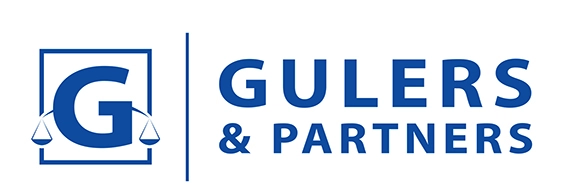The Art of the Follow-Up: Nurturing Client Relationships for Long-Term Success

Introduction: The Overlooked Power of the Follow-Up in Legal Practice
In the pursuit of new clients and the demands of ongoing cases, the crucial art of the follow-up often gets overlooked. However, in the relationship-driven world of legal practice, consistent and thoughtful follow-up is paramount for nurturing client relationships, fostering loyalty, and ultimately achieving long-term success. The follow-up is not just about chasing leads; it's about demonstrating care, providing continued value, and building lasting connections that can lead to repeat business and valuable referrals. This article explores the essential strategies and best practices for mastering the art of the follow-up in the legal profession.
Why the Follow-Up Matters in Legal Practice
Effective follow-up offers numerous benefits for lawyers and law firms:
Increased Client Retention: Staying in touch with past clients keeps your firm top-of-mind when they have future legal needs or know someone who does.
Higher Conversion Rates: Consistent follow-up with potential clients can significantly increase the likelihood of them choosing your services.
Stronger Client Loyalty: Showing continued interest and providing value after the initial engagement builds trust and fosters loyalty.
Valuable Referrals: Satisfied clients who feel valued are more likely to refer your services to others.
Enhanced Reputation: Consistent and professional follow-up reinforces a positive image of your firm and your commitment to client care.
Identifying New Opportunities: Follow-up conversations can sometimes uncover new legal needs or opportunities for expanded services.
When and How to Follow Up: Key Stages and Methods
The follow-up process should be integrated into various stages of the client lifecycle:
After the Initial Inquiry: Promptly follow up with individuals who have contacted your firm with an inquiry. Acknowledge their interest, answer any initial questions, and schedule a consultation if appropriate.
After the Initial Consultation: Following the first meeting, send a thank-you note or email summarizing the discussion and outlining the next steps. This demonstrates professionalism and reinforces your interest.
During Ongoing Representation: Maintain regular communication with current clients, providing updates on their case and addressing any concerns promptly. This builds trust and ensures they feel informed and valued.
After Case Resolution: Once a case is concluded, don't let the relationship end. Send a follow-up to ensure the client is satisfied with the outcome and offer your assistance for any future legal needs.
Periodically with Past Clients: Stay in touch with past clients through occasional newsletters, holiday greetings, or invitations to relevant events. This keeps your firm top-of-mind.
Effective Follow-Up Methods for Lawyers
The most appropriate follow-up method will depend on the stage of the relationship and the client's preferences. Consider these options:
Personalized Emails: Tailored emails that address the client by name and reference specific details from your previous interactions are highly effective.
Phone Calls: A personal phone call can be particularly impactful, especially for following up after a significant milestone or to address a sensitive issue.
Handwritten Notes: A handwritten thank-you note or a follow-up after a meeting can leave a lasting positive impression.
LinkedIn Engagement: Connect with clients on LinkedIn and occasionally share relevant updates or articles they might find interesting.
Personalized Check-Ins: For ongoing clients, schedule regular check-ins to discuss their case and address any concerns proactively.
Value-Added Content: Share relevant articles, blog posts, or invitations to webinars that might be of interest to past clients based on their previous legal needs.
Holiday Greetings and Special Occasion Messages: A simple message during holidays or on significant occasions can help maintain a personal connection.
Best Practices for Effective Follow-Up
To master the art of the follow-up, keep these best practices in mind:
Be Prompt: Follow up in a timely manner, ideally within 24-48 hours of an initial inquiry or meeting.
Be Personalized: Generic follow-ups can feel impersonal. Tailor your message to the individual client and reference specific details.
Provide Value: Your follow-up should offer value to the client, whether it's answering a question, providing an update, or sharing relevant information.
Be Consistent but Not Pushy: Find the right balance between staying in touch and overwhelming the client. Understand their communication preferences.
Be Organized: Keep track of your follow-up efforts using a CRM system or a similar tool to ensure no one is forgotten.
Listen Actively: Pay attention to the client's responses and tailor your subsequent follow-up accordingly.
Set Reminders: Use your calendar or task management system to schedule follow-up reminders.
Train Your Team: Ensure that all members of your team who interact with clients understand the importance of the follow-up and are trained on best practices.
Measure Your Follow-Up Success: Track metrics like conversion rates from leads who received follow-up and client retention rates to assess the effectiveness of your efforts.
Common Follow-Up Mistakes to Avoid
Being Too Generic: Sending the same standard follow-up to everyone.
Waiting Too Long: Losing momentum by delaying your follow-up.
Being Too Pushy or Salesy: Focusing solely on your own needs rather than the client's.
Not Personalizing Your Communication: Failing to address the client by name or reference specific details.
Forgetting to Follow Up: The most significant mistake of all.
Not Providing Value: Simply checking in without offering any new information or assistance.
Conclusion: Cultivating Lasting Client Relationships Through Thoughtful Follow-Up
In the competitive legal landscape, building and nurturing strong client relationships is essential for long-term success. The art of the follow-up is a critical component of this process. By implementing thoughtful, personalized, and consistent follow-up strategies, lawyers can demonstrate their commitment to client care, increase client retention, boost referrals, and ultimately cultivate lasting relationships that contribute significantly to the growth and reputation of their practice. Mastering the follow-up is not just a good practice; it's a strategic imperative for sustained success in the legal profession.


















































 Successful
Successful